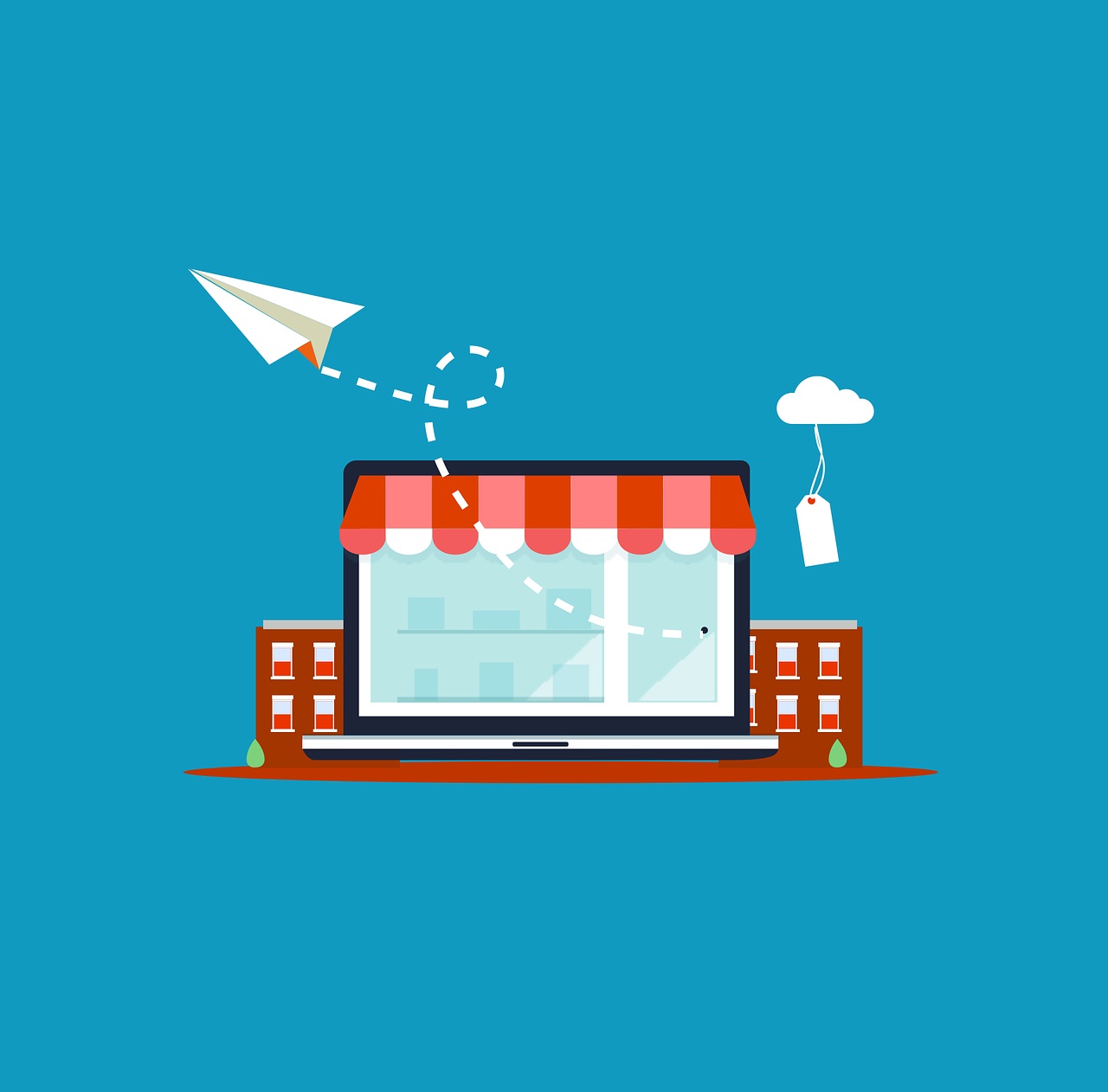Ecommerce Marketing Strategies
Did you know that there are approximately 12 million to 24 million eCommerce sites across the globe? Plus, according to research, “By 2021, eCommerce is expected to generate $4.5 trillion in sales per year.”
Clearly, the ecommerce is exploding. It is one of the most competitive, revenue-generating markets that’s constantly changing – and upgrading – in order to better fit its customer’s dynamic needs. So, if you’re someone who is looking to revolutionize their e-commerce marketing right from the start, and You are focused on driving traffic to your products, branding, etc. In the back of your brain, you know that you will need to do some accounting for your business. but that’s super easy with the help of ERP accounting software as it will handle accounting, inventory management, order management, tax management, payroll, banking and many such requirements of the business. It supports all day-to-day processes from recording invoices to generating various MIS reports.
In this blog, we will look at the top-7 ways e-commerce strategies that truly work wonders for your sales, marketing, and customer service teams. Let’s get started.
Table of Contents
Top-7 Ecommerce Marketing Strategies that have Stood the Test of Time
1. Offer Class Action Customer Service
Make no mistake that your ecommerce customers are always online. In fact, your customer’s shopping behavior and likes/dislikes are ever-evolving – with users shopping at 2 a.m., on weekends, and year-round, expecting brands to be available to address their concerns round-the-clock. This is probably why brands – big and small – are drifting towards the ‘chatbot revolution.’
By implementing intuitive artificial technologies like live chat, chatbot, etc, brands can address customer concerns, guide users through video chats and conversational texts, recommend products and upsell/cross-sell, among other things. Long story short, the central idea is to be ever-present for your customer across online and offline channels of communication so that you can offer instant and seamless customer service.
2. Drive Efforts towards Creating Super-Targeted Leads
More often than not, customers aren’t willing to share personal information (other than email ID) if they don’t see any real value in the data exchange. And if you do keep pressing on getting the information, you run the risk of losing customers and boosting your conversion rate – a big mistake.
This is where you can make use of lead generation quizzes such as the one shown here:
- Here’s an example of a lifestyle-centric lead-generation quiz by the brand – Beardbrand – which rolls out a ‘Buzzfeed style’ quiz that’s entertaining and educative:
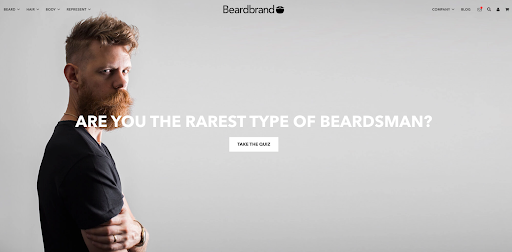
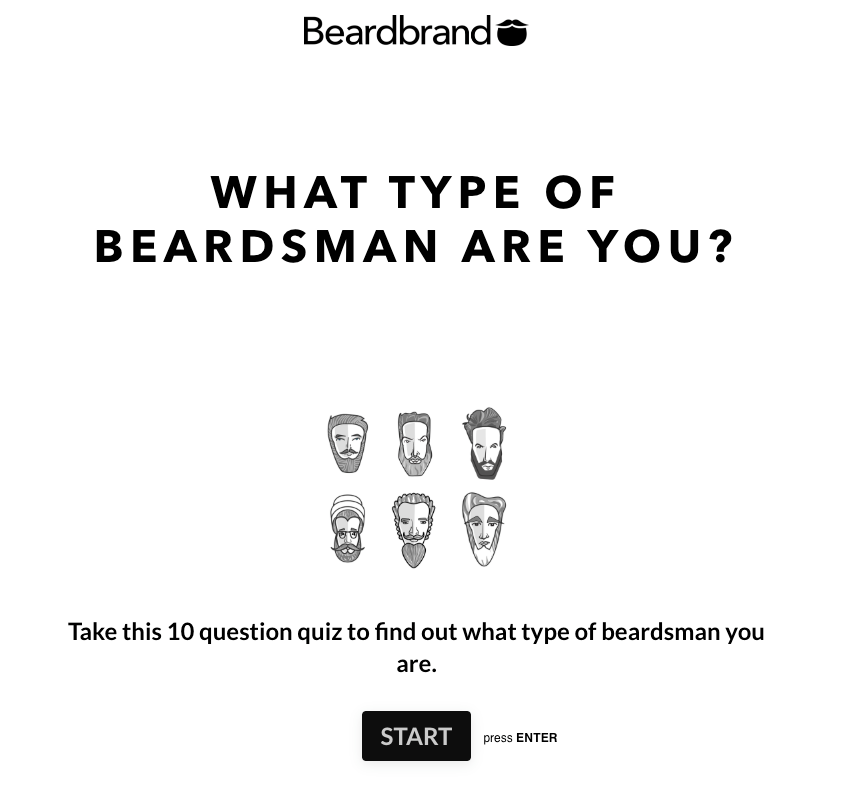
In terms of the benefits, these types of quizzes help segment new leads, allow your brand to offer customized and relevant products to customers, and strategize for future campaigns based on authentic, real-time data.
Handy tip: If you are going to ask your customers for their email address, in addition to other details, make sure to provide a valid and honest reason. Once you have all the data at hand, you can follow up with your leads leveraging highly-specific email marketing campaigns.
3. Focus on Converting Abandoned/Empty Shopping Carts
Granted this is simpler said than done; however, ecommerce brands in particular need to look at ways in which they can sell better to customers without sounding aggressive or annoying. Take the example of Vinomofo:
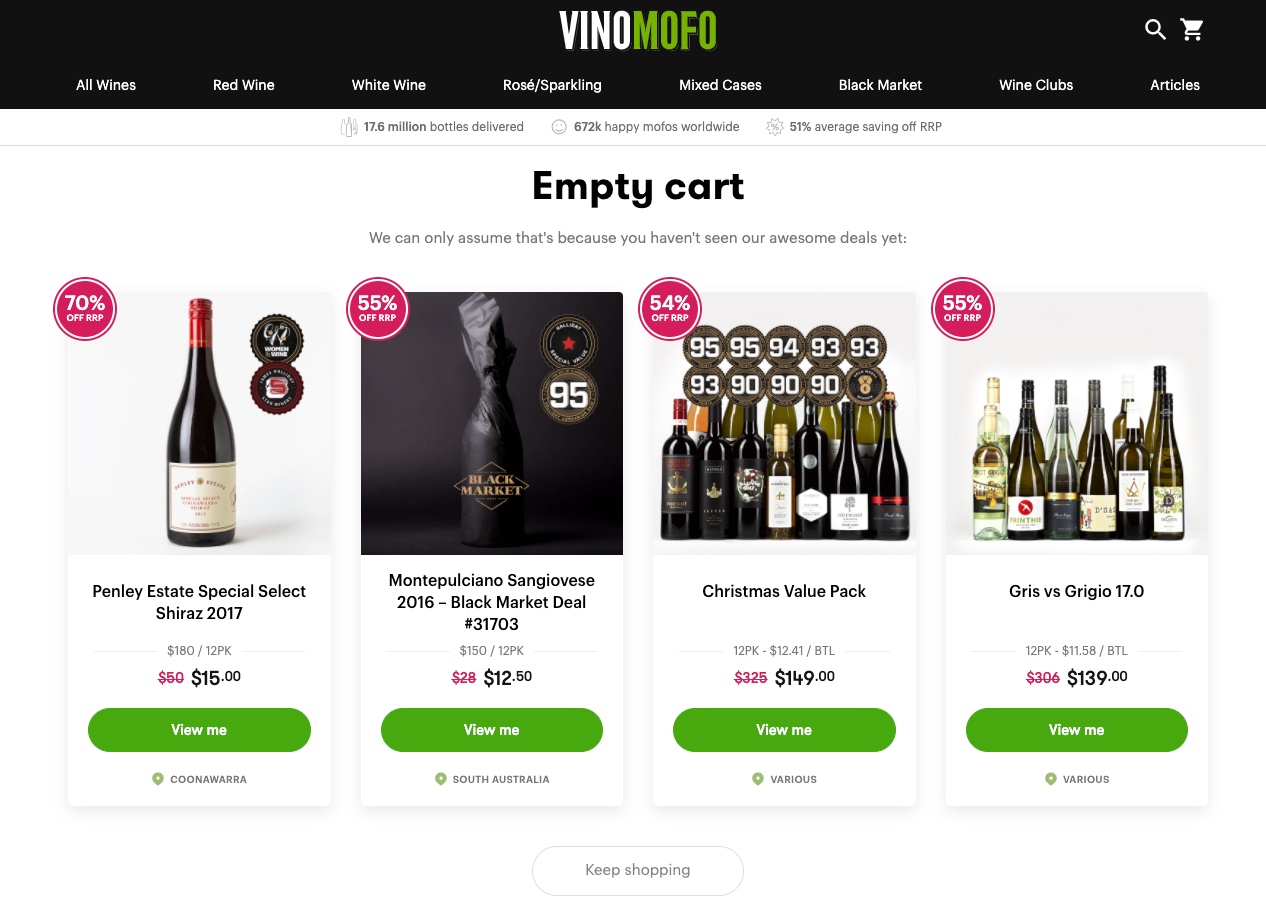
As you can see, once the customer lands on the “empty shopping cart” page, they are greeted with an honest-yet-subtle message that reads: “We can only assume that’s because you haven’t seen our awesome deals yet.”
But that’s not where the magic lies. Notice how the brand talks about its ‘big wins’ by highlighting the number of bottles sold, the number of happy customers, the amount of money saved, etc. to reel the users in. Additionally, you’ll also find that the same section demonstrates other incentives that might be of interest to the users such as available deals, free shipping, free returns, etc.:
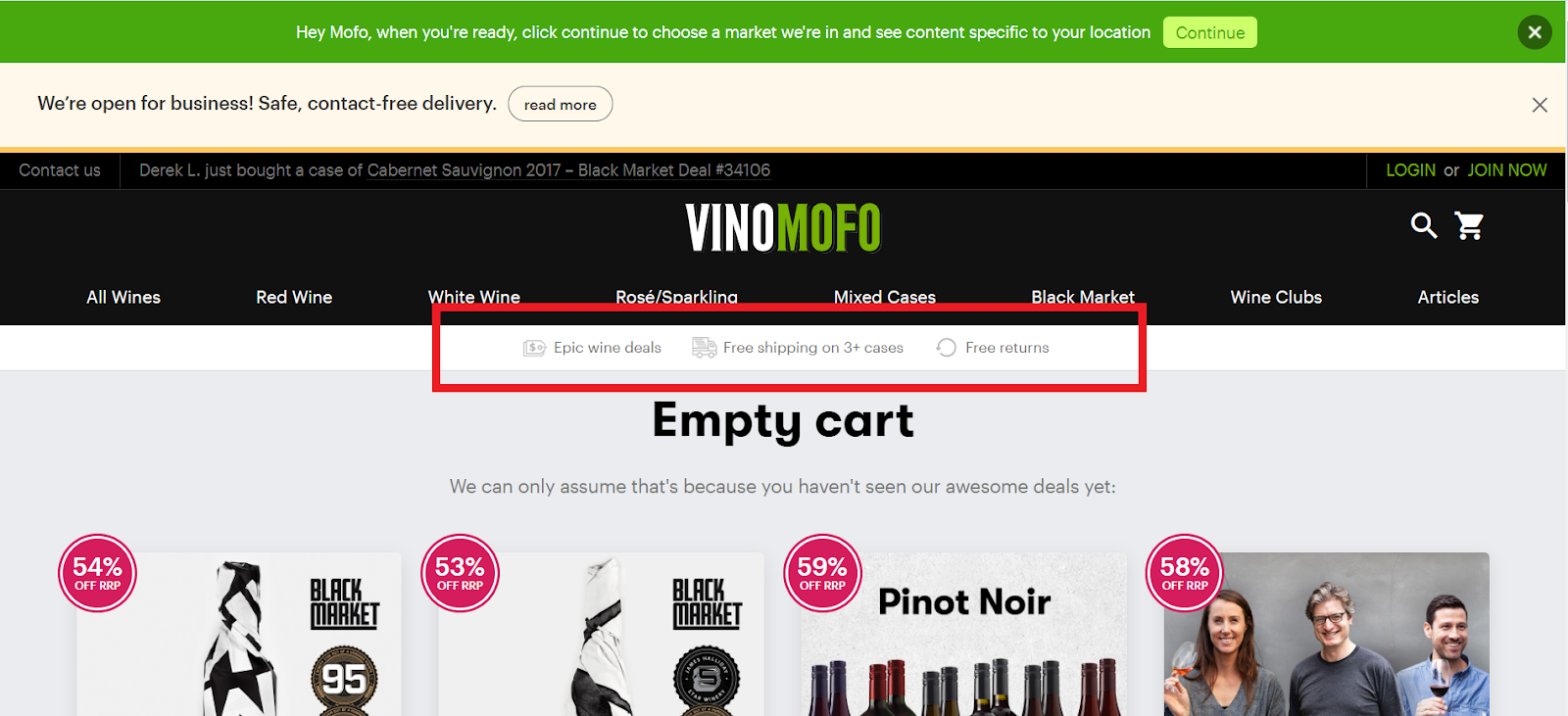
4. Strive for Top-of-the-Mind Awareness, ALWAYS
There’s no telling how many brands customers are faced with on a daily basis. Naturally, helping your brand stand apart requires serious and dedicated effort. One of the better ways to ensure top-of-mind awareness is by rolling out promotional emails that target customers who have the intent to buy but just need a little nudge from time-to-time. Take the example of the brand Glossier which humorously and memorably reminds subscribers of their upcoming sales event by sending out a calendar invite:
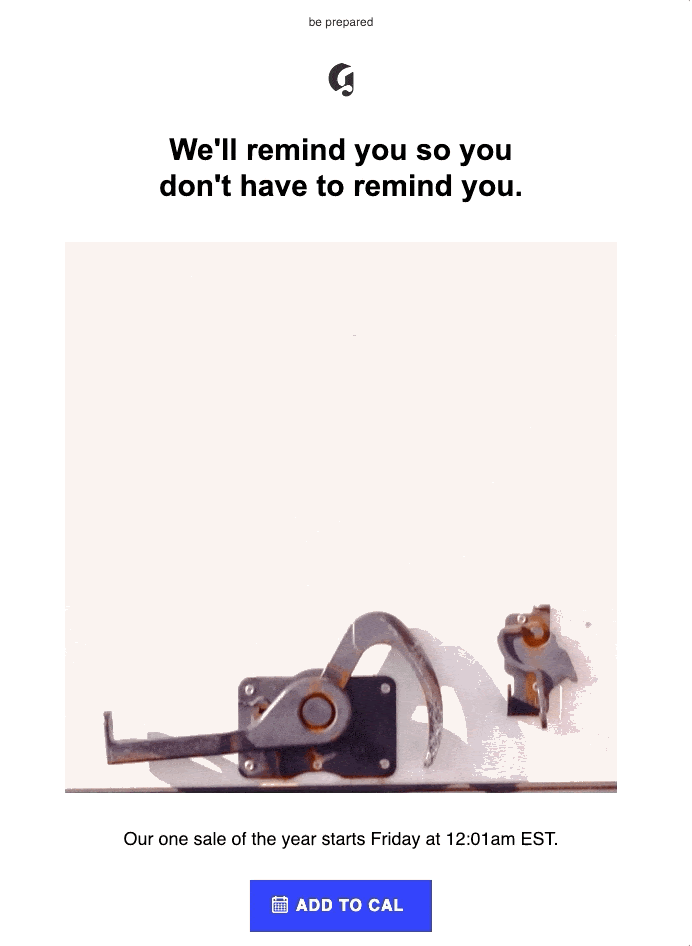
One of the many reasons why such a simple-yet-impactful strategy works is because your customers feel loved, special, and appreciated by the brand – a win-win for all. If you wish to truly nail your sales email campaign, make sure to begin your email by thanking customers and then move on to providing a useful and crisp description of the event. You can also insert a website link in your calendar event and include social media pages to get traffic to your social media platforms.
5. Bridge the Gap Between Wish Lists & Discounts
Truth be told, wish lists are sort of a black hole which customers forget about as soon as they close the website window. However, this need not be the case. You should view it as a window of opportunity to converted highly-interested customers. Sometimes, a small incentive such as a deal or a discount can turn out to be all the push your customer needed:

In other cases, you can send reminder emails informing customers about forgetting items in their cart in a witty and indirect way that’s engaging and effective:

In both cases, make sure to integrate a powerful CTA, which encourages the user to complete the purchase in addition to offering a true value-add in the customer’s eyes.
6. Leverage Customer Testimonial and Reviews to your Advantage
This might seem like an obvious suggestion, but most ecommerce websites don’t use customer testimonials and reviews to their advantage. It’s human nature to trust other customers, and hence as an ecommerce brand, you should focus on highlighting your customer reviews as seamlessly as possible.
You could send out testimonial emails as Brooklinen does:
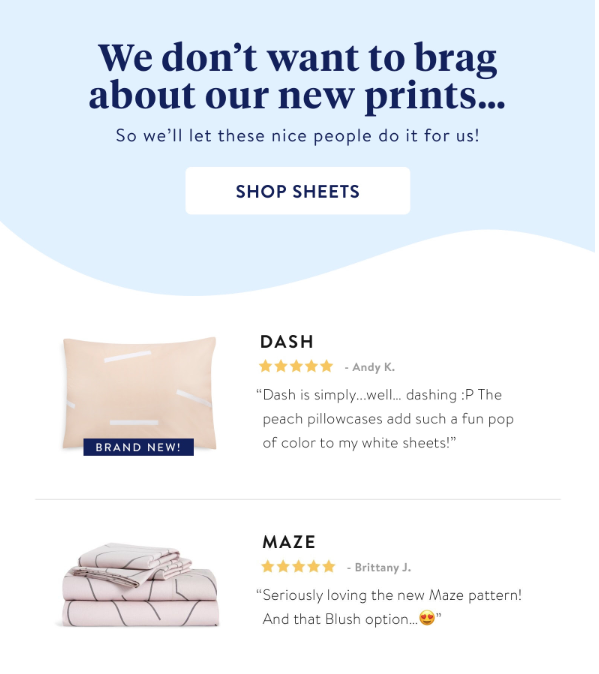
Alternatively, you could also highlight it in your promotional emails or your website and create social proof where it truly matters:
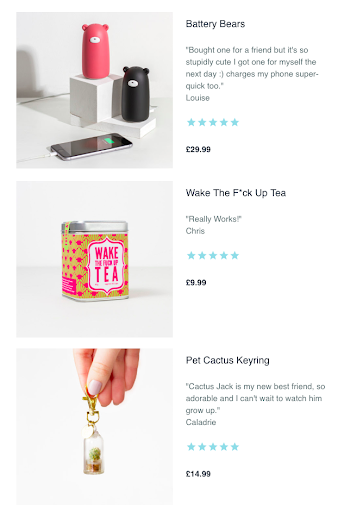
7. All Hail Sold Out’ Products
Circling back to human psychology, customers want things they cannot have. And this is where the ‘Sold Out’ strategy works its charm. If, say, a particular product does get sold out, you can always enhance buyer curiosity by showing customers relevant bestsellers:
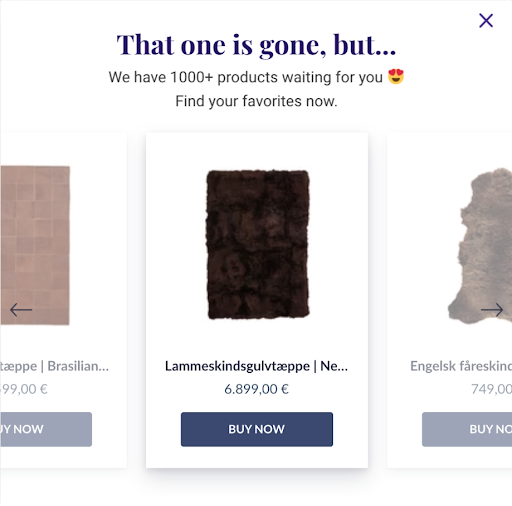
The reason why you need to take note of customers who willingly subscribe to ‘out-of-stock’ notifications is that you can approach them with similar other products and convert them, one way or another.
The brand ASOS proves to be an excellent example in this regard. Notice how the brand highlights the “View similar items” section:
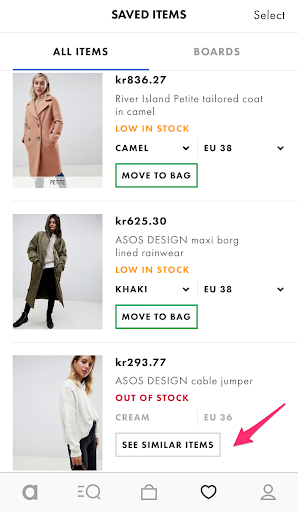
Closing Thoughts
“By 2040, it’s estimated that 95% of all purchases will be through eCommerce.” – Nasdaq
Contrary to popular opinion, making small tweaks and changes (like the ones mentioned above) to your ecommerce strategy can boost sales, enhance user satisfaction, and build brand loyalty. One final piece of advice: Ecommerce retailers need to embrace a change in mindset and move beyond simply changing their website aesthetics to ace their ecommerce strategy. What do you think?
Author bio:
Ashwini Dave
Ashwini is passionate about Business, Entrepreneurship, E-commerce, emerging technology and Digital Marketing. She is working with Acquire ( https://acquire.io/ ) as a digital marketing expert. She is a free soul and adventurous scholar who spends her free time with herself, loved once, music, as well as watching & playing sports. She is ocean addicted and on roads being a thrill-seeking traveler to get new experiences as she looks at life as our very own works of art.

